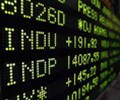In a data vacuum, the new thing is the CPI watching binge

Investors are finally getting some government data, 23 days after the US Federal government shutdown, so the September consumer inflation reading is expected to attract a lot of interest when it is released on Friday morning, especially as the report comes ahead of next week’s Federal Open Market Committee (FOMC) meeting.
Here’s what strategists had to say ahead of the Consumer Price Index (CPI) report:
With headline inflation expected to rise to 3.1% year-on-year, Julien Lafargue, chief market strategist at Barclays Private Bank wrote that “growth in housing costs and airfares should be contained, allowing services inflation to moderate more,” but he added that “prices of core goods may have risen at a faster pace in September.”
Traders had priced in another 25 basis point rate cut next week, according to the CME Group’s FedWatch tool. And Lafargue wrote that the CPI would need to show “a meaningful positive surprise for the market to change its mind about additional interest rate cuts by the U.S. Federal Reserve next week.”
Considering the impact of US President Donald Trump’s tariff policy is one of the biggest concerns for investors, Seema Shah, head of global strategy at Principal Asset Management assesses the situation.
Shah noted that tariffs had pushed inflation slightly further above target in recent months and the impact was most visible on core goods. Strategists have seen pricing pressures emerge in certain segments, with prices of imported goods having increased by 5% since March compared with prices of domestic goods of 1%.
But with inflation expectations easing from the initial estimate of 3.5% year-on-year, he noted that the pace of inflation so far has been quieter than expected, likely due to a combination of margin compression, initial inventory loading and trade diversion.
But Shah noted that the restrictions may be “temporary.”
“As supplies run low, trade channels narrow, and margins continue to shrink, companies may be forced to pass on higher costs to consumers. Therefore, upside risks remain,” he said. “If price pressures spill over into the services sector, this could signal a broader, more persistent inflation trend.”
The hope is that the rates will bring “a one-off, modest inflationary shock, keeping core CPI near current levels before easing slightly by the end of 2026.”
But the strategist said that “the risk of a more sustained inflation episode cannot be ruled out, which might prompt the Fed to adopt a more cautious approach to easing.”
At Vanguard, senior US economist Josh Hirt said he expects “goods prices to strengthen due to tariffs, and strength in the services sector as medical services recover after a setback last month.”
On the shelter side, he sees inflation weakening again towards trend, after strengthening OER and rents in August. And Hirt sees the volatile hotel category experiencing a decline compared to its strengthening last month.
Economists see food and energy showing improvement “although higher energy prices are expected to be the main driver.”
Source: Reuters (Sinéad Carew)
